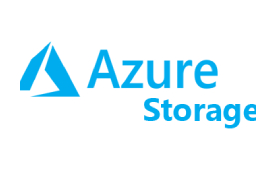Secure, high-performance, reliable, and scalable cloud storage
The Azure Storage platform is Microsoft’s cloud storage solution for modern data storage scenarios. Azure Storage offers highly available, massively scalable, durable, and secure storage for a variety of data objects in the cloud. Azure Storage data objects are accessible from anywhere in the world over HTTP or HTTPS via a REST API. Azure Storage also offers client libraries for developers building applications or services with .NET, Java, Python, JavaScript, C++, and Go. Developers and IT professionals can use Azure PowerShell and Azure CLI to write scripts for data management or configuration tasks. The Azure portal and Azure Storage Explorer provide user-interface tools for interacting with Azure Storage.
Azure Storage services offer the following benefits for application developers and IT professionals:
The Azure Storage platform includes the following data services:
Azure Blob storage is Microsoft’s object storage solution for the cloud. Blob storage is optimized for storing massive amounts of unstructured data, such as text or binary data.
Blob storage is ideal for:
Objects in Blob storage can be accessed from anywhere in the world via HTTP or HTTPS. Users or client applications can access blobs via URLs, the Azure Storage REST API, Azure PowerShell, Azure CLI, or an Azure Storage client library. The storage client libraries are available for multiple languages, including .NET, Java, Node.js, Python, PHP, and Ruby.
The Azure Queue service is used to store and retrieve messages. Queue messages can be up to 64 KB in size, and a queue can contain millions of messages. Queues are generally used to store lists of messages to be processed asynchronously.
For example, say you want your customers to be able to upload pictures, and you want to create thumbnails for each picture. You could have your customer wait for you to create the thumbnails while uploading the pictures. An alternative would be to use a queue. When the customer finishes their upload, write a message to the queue. Then have an Azure Function retrieve the message from the queue and create the thumbnails. Each of the parts of this processing can be scaled separately, giving you more control when tuning it for your usage.
Information Source – https://docs.microsoft.com/en-us/azure/storage/common/storage-introduction
